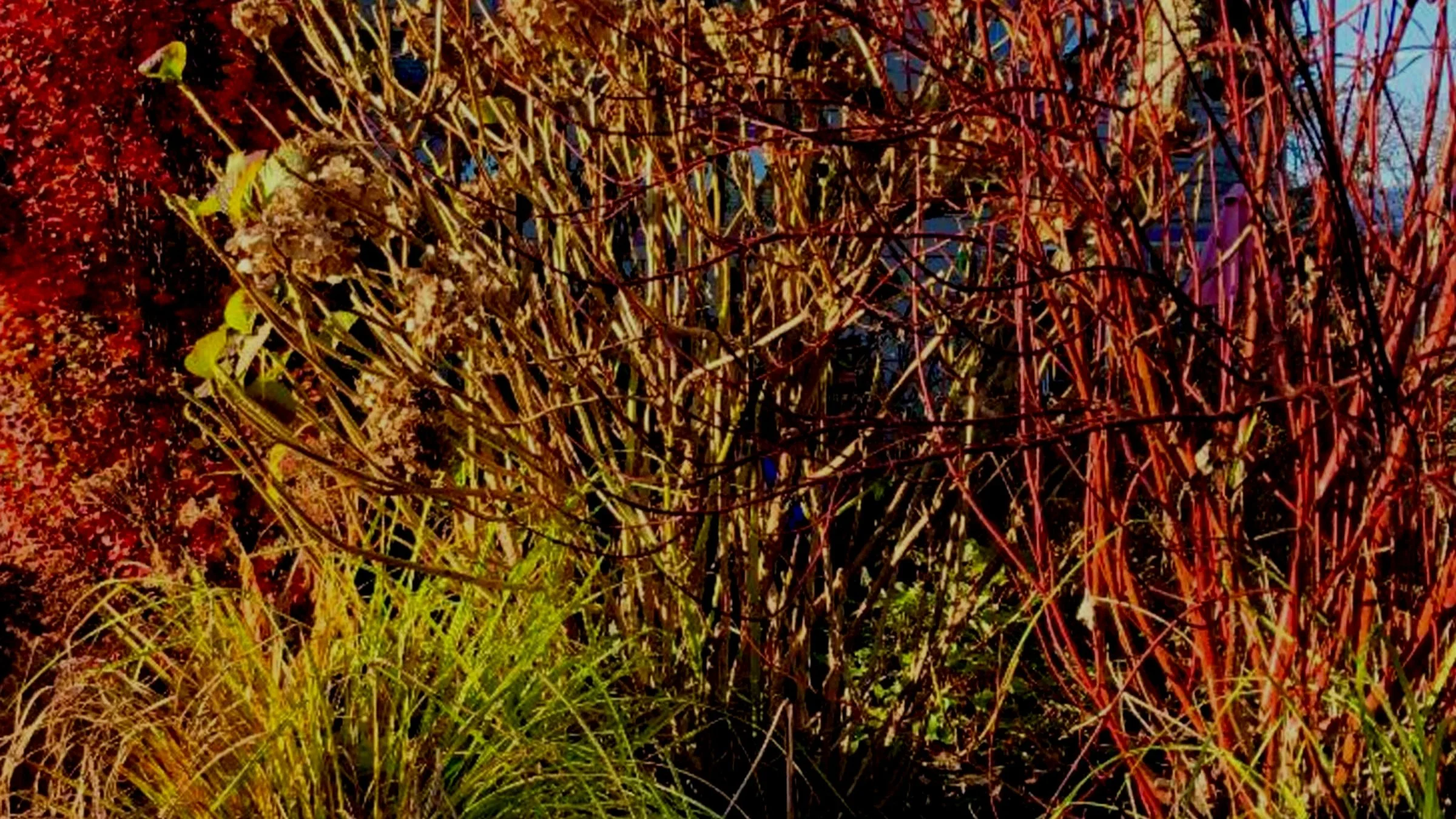I have often noticed that as I move deeper into the dark and dreary days of winter the need for some color becomes more and more important to me. Somehow bright colors have the ability to lift my spirits and move me out of this pit of despair that often follows me over the next several months. Even though I preach that winter color predominately comes from foliage, bark and berries, the occasional winter blooming plant is a pure delight to the senses. Thankfully, due to our relatively mild maritime climate, we have several options for winter bloomers. Here are a couple that are blooming now that I discovered in the nursery the other day.
Polyspora longicarpa (Fullmoon Polyspora) - This is a new one to me that caught me dead in my tracks. Polyspora is a native to Southeast Asia but we have a related species called Loblolly Bay that is native to the southeast coast of North America. Polyspora (sorry, I don’t have a common name for this plant) is in the same botanical family as Camellia and shares similar qualities and growing requirements. The leaves are longer than camellias but are just as glossy and attractive, and of course are evergreen. The flowers are ginormous, coming in at 5 to 6 inches across, with a single circle of pure white petals accented in the center with a filamentous button of yellow stamens. Monrovia Nursery, who is producing and marketing this plant, has the following things to say: “This stately upright grower creates a beautiful focal point as a small tree or multi-trunked shrub. Plant in groups as a tall, natural background hedge. Shiny new red leaves accent the thick glossy leaves, providing a handsome backdrop for large single white flowers in late winter to early spring”. In our northwest climate Polyspora is expected to grow best in partial shade (think morning sun and afternoon shade, although it would probably adapt to full sun around here) and will top out at 12 feet tall. It is rated for zone 7 which means it is hardy to 0 to 10 degrees, but like all broadleaf evergreens can be damaged by a sudden drop in temperature, especially if it is preceded by an especially warm period (like we have been having).
Speaking of camellia-like plants, Sasanqua camellias are blooming now and there are several varieties to choose from. The Sasanqua camellias differ from the more common japonica ones in that they bloom in the fall and early winter. Their leaves are smaller, the growth is less formal and most of the flowers are single. There is something soothing about the simplicity of a single flower that I much prefer in the winter. Another benefit of single flowers is that they shed water and hold up much better during our rainy season. Here are three varieties that caught my eye with descriptions from Monrovia:
Kanjiro—“A truly stunning cerise pink semi-double bloom edged in red with golden stamens and a slight fragrance. Dense semi-weeping habit and glossy, dark green foliage.”
Pink-A-Boo—“Large, wonderfully fragrant, deep pink blooms are centered with bright yellow stamens - making a beautiful addition to the cool season garden.”
Yuletide—“Single, brilliant red blooms centered with bright yellow stamens make an elegant statement in the winter garden. Excellent foundation shrub or espalier specimen.”
Two other cultivars, Spring’s Promise and Winter’s Snowman, are hybrids (so not technically sasanqua types) that bloom now and are extremely hardy, worthy of being added to any garden. Any of the above plants are sure to lift your spirits this time of year.


